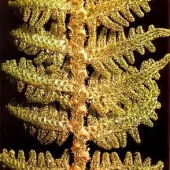Please select root levels for the menu
NZ Plants
Leafy liverworts 2: Leaf characteristics
Liverwort leaves are one cell layer in thickness, lack a midrib (nerve) and are arranged in 2 - 3 rows. The leaves are often lobed or toothed and may have fine hair-like cilia on their margins or tip.There is a great variety in the way leaves are arranged on the stem, their form and their colour.
Arrangement of leaves on the stem
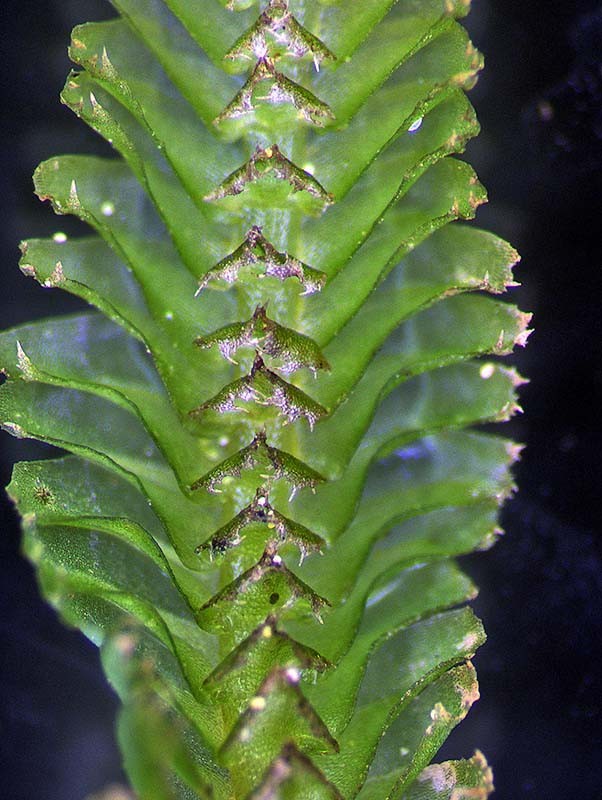
Bazzania adnexa - The ventral surface (underside) of the stem bears a row of short underleaves. Seen behind them in this photo are two rows of long, overlapping leaves which are attached to the dorsal surface (upperside). The leaf tips bear small blunt teeth usually in groups of three.
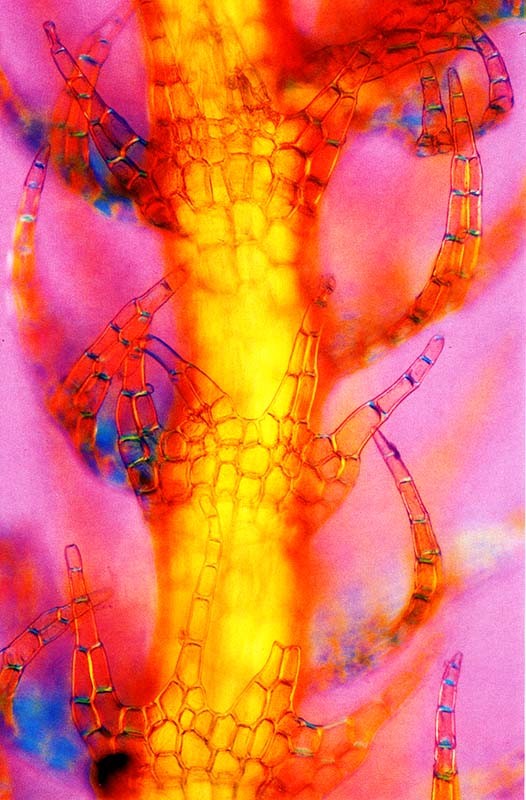
Telaranea sp. - Seen from below, there are three rows of very similar, delicate leaves, each of which has four fine cilia. More on this group of liverworts
The form of leaves
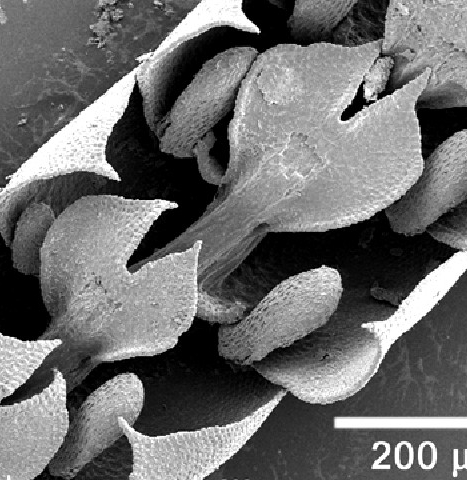
Frullania aterrima - The leaves of some liverworts are deeply cut into two segments. The outlines of individual cells on each leaf are clearly seen in this scanning electron microscope (SEM)
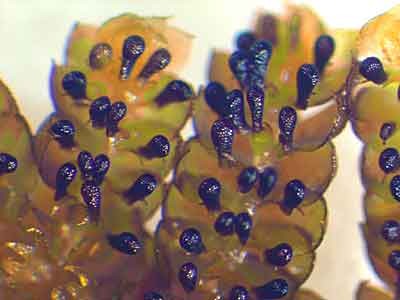
Lepidolaena taylorii - Some liverworts form lobules of various shapes attached to underside of their leaves.

Gackstroemia alpina - The leaf lobules of many liverworts bear cilia (hairs) on their margins.
The colour of leaves
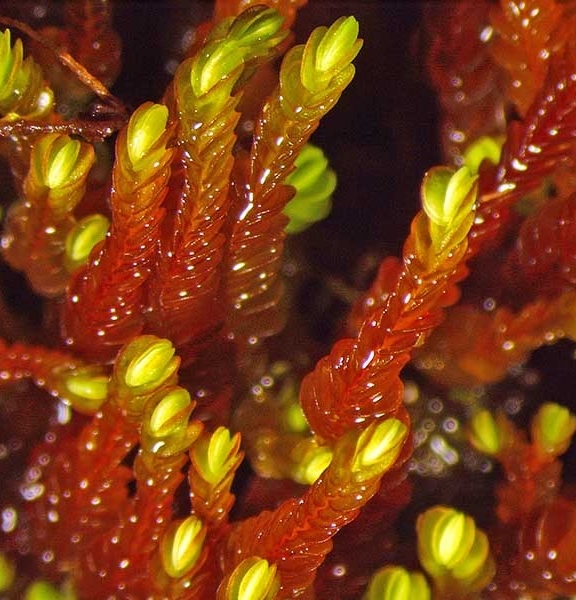
Jamesoniella colorata - A leafy liverwort that commonly has red pigments in its new growth.
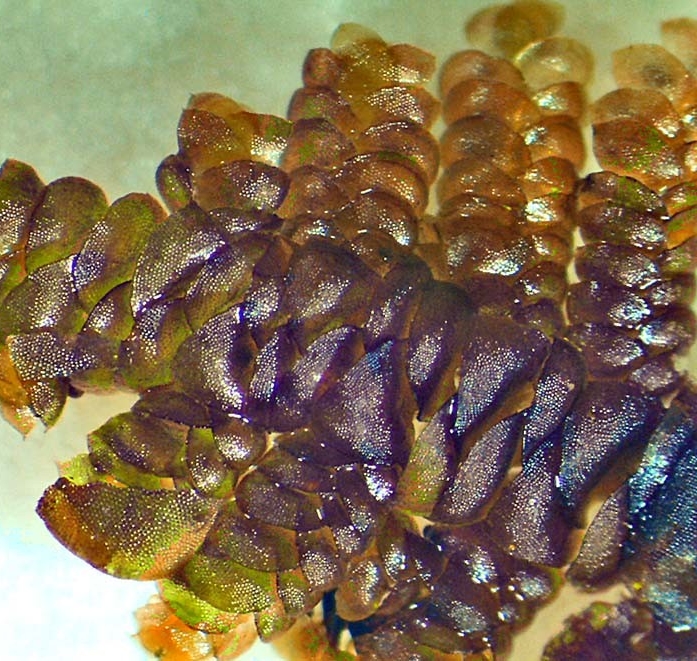
Lepidolaena taylorii - This leafy liverwort often has a very dark pigmentation when exposed to strong light.

